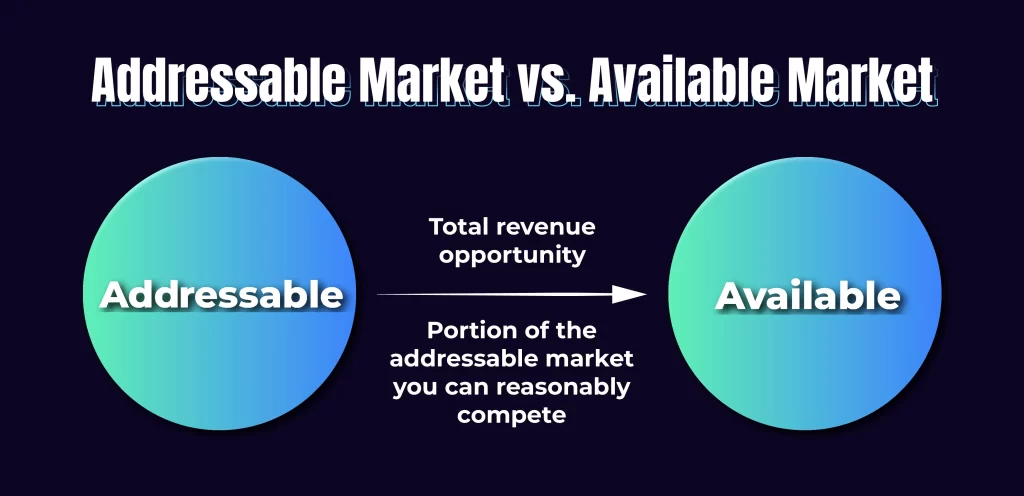
Your business acumen needs a well-versed knowledge of the market size in your respective business field to generate profitable thresholds.
Accurate and extensive market research is essential for successful business planning in today’s increasingly competitive business marketplace. Estimating the size of the market is an integral part of this study. Businesses can make better decisions, target the correct customer groups, analyze competition, anticipate revenues, attract investment, and manage risks when they have a clear picture of the size and growth potential of the market. We will discuss the importance of assessing market size for strategic business planning, citing relevant data and examples from authoritative sources.
Opportunity Assessment
Estimating market size is the foundation for assessing the opportunity a market presents for a business. By determining the Total Addressable Market (TAM), businesses can evaluate the market’s size and growth potential. For instance, according to a report by Statista, the global e-commerce market is projected to reach $3.58 trillion in 2023, highlighting the immense potential for businesses operating in this space.
The practical implementation of TAM is supported by the term ‘Available Market,’ which is simplified below.

Businesses can use market size estimates to inform tactical choices like new market entry, product development, and resource allocation, by learning if the market is big enough to sustain their growth targets. Following are two of the many key-points to mainly focus on.
Identifying Growth Potential: Estimating market size helps businesses identify high-growth markets or emerging trends, allowing them to capitalize on new opportunities and stay ahead of the curve.
Assessing Market Saturation: Predicting market size helps preventing businesses from entering oversaturated markets, enabling them to focus on markets with untapped potential.
Targeting the Right Market Segments
Quantifying market size enables businesses to identify and target the most lucrative market segments or customer groups. By analyzing the magnitude and characteristics of different segments, businesses can tailor their marketing and sales efforts accordingly. Through the understanding of market size of each segment, businesses can prioritize their resources and customize their offerings to meet the specific needs and preferences of their target audience.
Below are the simplified points to make the operations easier:
Market Segmentation Analysis : Estimating market size allows businesses to segment the market based on demographics, psychographics, or behavioral factors, enabling them to create targeted marketing campaigns and product positioning strategies.
Customer Persona Development : Estimating market size helps in building accurate customer personas, which guide businesses in understanding their target customers’ needs, preferences, and purchasing behavior.
Competitive Analysis
Understanding the size of the market, helps businesses evaluate the competitive landscape and make informed decisions regarding differentiation and market positioning. Proper estimation of market share and analyzing the activities of existing competitors, businesses can identify gaps and unmet needs, enabling them to develop effective strategies to stand out from the competition. According to a study by Harvard Business Review, companies that differentiate themselves effectively from competitors achieve higher customer loyalty and profitability. To derive furthermore,
Identifying Competitive Advantages : Estimating market size assists in identifying areas of differentiation, allowing businesses to highlight their unique value propositions and gain a competitive edge.
Benchmarking Performance: Estimating market size enables businesses to benchmark their performance against competitors, identifying opportunities for improvement and innovation.
Revenue Forecasting
Market size estimation is vital for revenue forecasting and financial planning. By understanding the size of the target market and estimating the percentage of market share they can capture, businesses can project their potential sales and revenue. This information is essential for budgeting, resource allocation, pricing strategies, and overall financial planning. Subsequently applied into…
Pricing Strategy Development : Market Size Forecasting helps businesses determine optimal pricing strategies based on market dynamics, competitive positioning, and customer willingness to pay.
Resource Allocation: Market estimation size allows businesses to allocate resources effectively, ensuring adequate investments in marketing, sales, and production to meet demand.
Investment and Funding
Ascertaining the potential market size is crucial when seeking investment or funding for a business. Investors and lenders need to assess the market potential and scalability of a business before committing their resources. A well-researched and substantiated market size estimate enhances the credibility of the business plan and increases the chances of securing financing.
For investors, business valuation and risk mitigation are the most crucial tools to evaluate any kind of deal because these two provide projected business growth and calculated insights into the risk factors of the business.
Risk Assessment
Calculating market size assists in assessing the risks associated with entering a particular market. By evaluating the size, growth rate, and competitive dynamics, businesses can identify potential challenges and uncertainties. This information helps in risk mitigation planning and developing contingency strategies to navigate market fluctuations and changing customer preferences.
Editor’s Note
Estimating market size is an essential component of business planning, providing valuable insights and analysis for informed decision-making. Accurately estimating market size, businesses can assess the opportunity, target the right customer segments, analyze competition, forecast revenues, attract investment, and mitigate risks. With the help of market research and statistical data, businesses can enhance their strategic planning, optimize resource allocation, and increase their chances of sustainable growth in today’s dynamic business environment. And to help your business out with this, we at Smart Advise are smartly capable enough to do so, contact us right now!